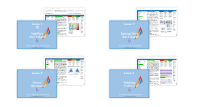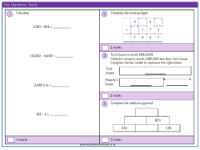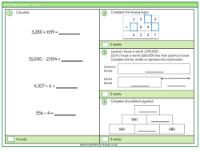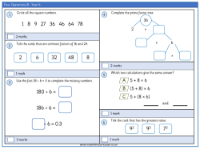Addition, Subtraction, Multiplication and Division - Vocabulary
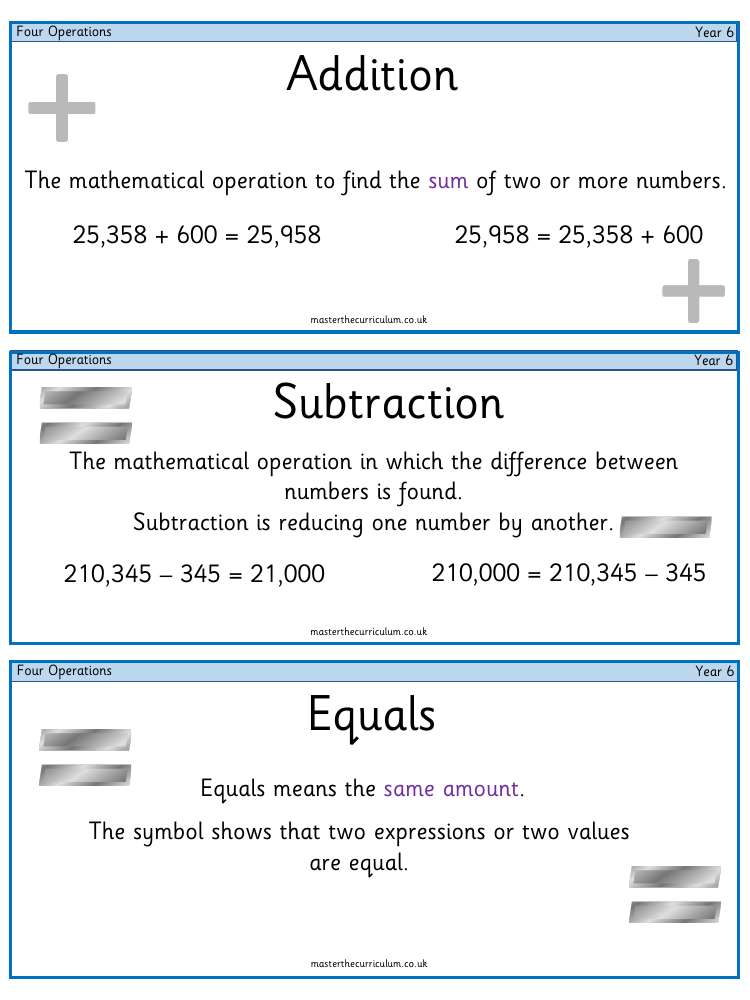
Maths Resource Description
Addition is a fundamental mathematical operation where two or more numbers are combined to find their total sum. Subtraction, on the other hand, involves calculating the difference between numbers, effectively reducing one number by another. The term 'equals' signifies that the quantities on either side of the equals sign are the same. This concept is demonstrated through examples such as "25,358 + 600 = 25,958" and "210,345 – 345 = 210,000", where the equals sign indicates that the expressions are balanced.
The four operations—addition, subtraction, multiplication, and division—are crucial for solving various mathematical calculations. Integers refer to whole numbers, which can be used to find a product, the result of multiplying two or more numbers together. For instance, "21 x 3 = 63" shows multiplication at work. Short division and long division are methods for dividing numbers, with short division involving dividing one digit at a time and long division being a step-by-step process for dividing by a two-digit number. Factors are numbers that can be multiplied together to produce another number, as seen in "3 and 4 are factors of 12 because 3 x 4 = 12". Understanding these operations and concepts is essential for students in Year 6 as they develop their mathematical proficiency.

